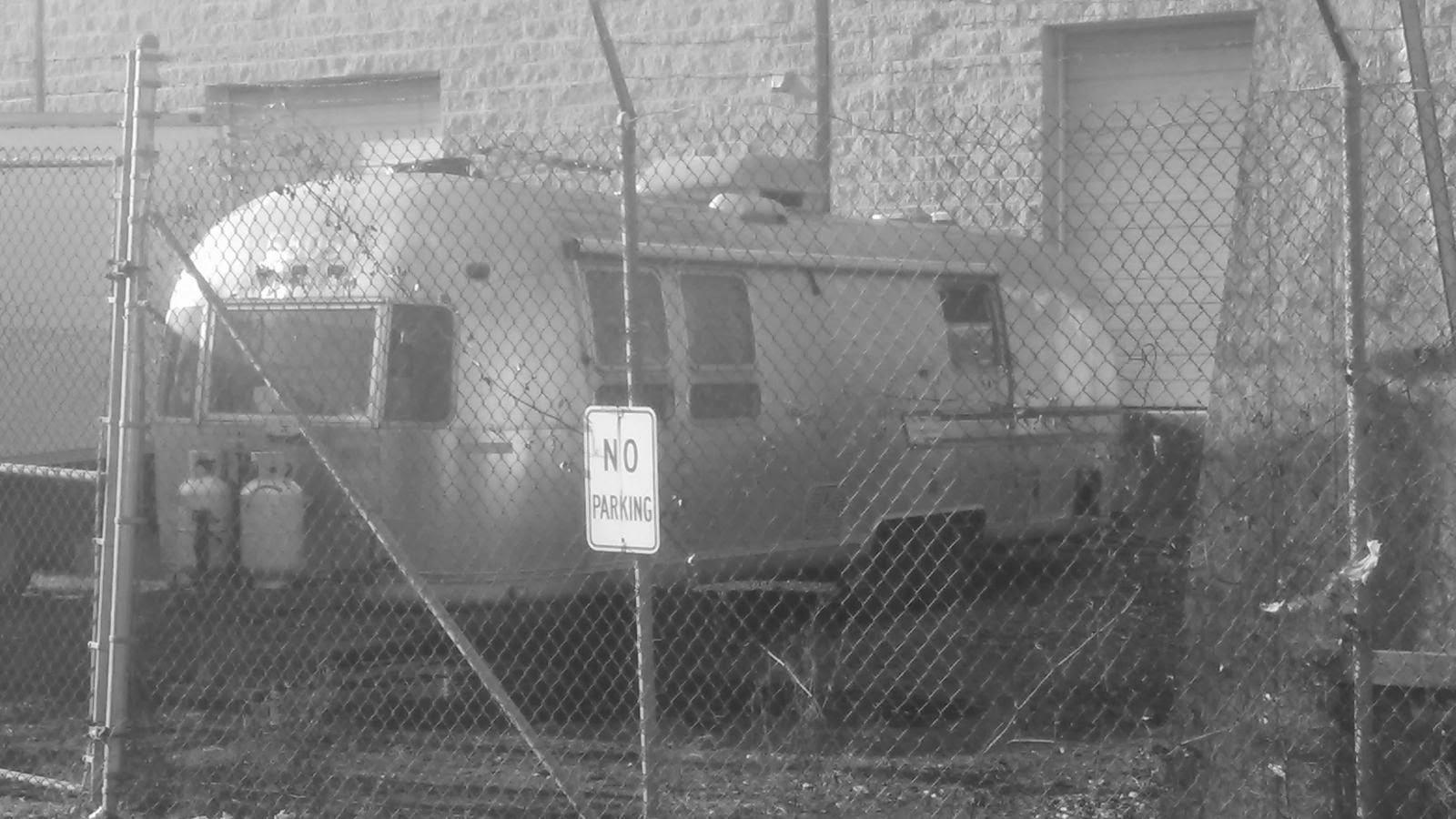We have scratched our heads over finding this message. I can only speculate that this trailer was such a special order and so far out of the normal production that the boys in the factory didn't know what to think.
Sorry for the jump forward, but in the last post she was just a bare frame. The frame was sandblasted then painted with three coats of POR15. The exposed elements were top coated with the POR top coat product. This is a new system I am trying and so far the results are impressive. The colors however are very limited. The plywood has been bolted down and the C channel installed. Honestly, those with a sharp eye will see in this photo that the belly pan is on too.
This is what I had to template off of for the new belly pan. In later years the belly pan is made of two long pieces of aluminum running back to front with a seam down the middle. On this trailer the aluminum was riveted into big panels with the seams going across the trailer. I think they used scraps since there was no real rhyme or reason to their dimensions. Normally, I copy things faithfully, but this time around I made my belly panels using maximum yield to the sheet. Aluminum is expensive and I felt it better not to be wasteful on something no one ever looks at.
Here you see three, four foot sheets riveted together to make a 12 foot long sheet. Two of these mega sheets and one smaller one make up the belly pan.
Here you see the belly pan sections all installed. You might also note those new wheel tubs. They were fabricated by my buddy Tom at Metal Benders. He used 3/32 thick aluminum and they are super solid. I suspect I will get a lot of calls from people wanting them for their project.
Here at the wheel wells I discovered an issue. The belly pan leaves a gap at the out riggers. Originally this was just left open. There was a great deal of road debris in there.
I came up with this improvement; a cap made of aluminum.(the aluminum is not white, that is the pvc film I always order my material with.
Another problem area is where the bumper meets the floor. I came up with a multi stepped flashing system. Above is the first layer. It caps off the plywood. Copious amounts vulkem were applied between this cap and the wood.
So there is step one.
Next I made this piece. It might be a small piece of metal, but that was some tricky metal bending right there.
Finally this piece caps off everything. Once the shell goes down, it is all sealed up.
Speaking of the shell going down… sorry about the big jump in work. Sometimes I am just too busy to remember to snap photos.
Now comes my personal favorite part of any project; the body work.
Due to the numerous dents, scrapes, and holes in the skin, many of the panels are being replaced.
Here, the first panel has been removed for copying. There will be a lot more on this in my next post.
Also in my next post I will tell you all about the new running gear. We had a few snafu's with the spring shop. Once this all gets sorted out, I will be getting very in depth about leaf spring axles.
Stay tuned, there is a lot more coming on this project.















































